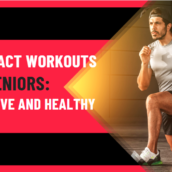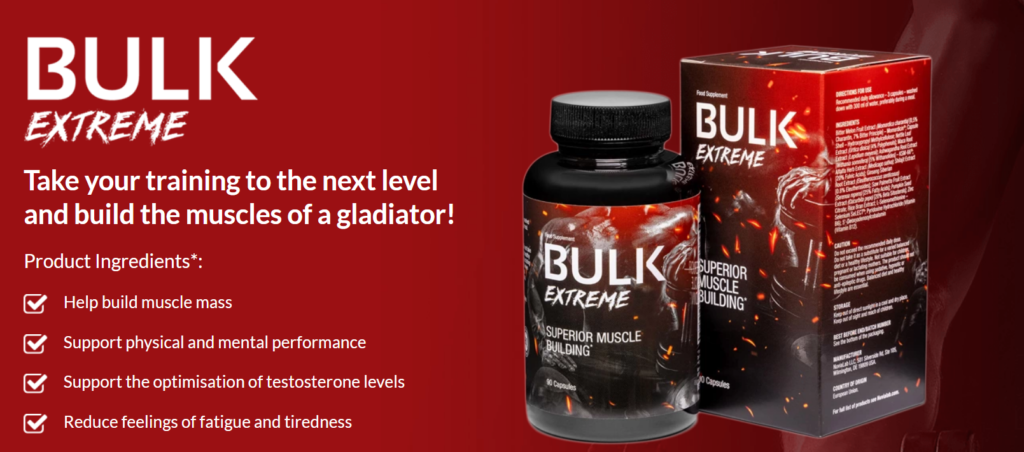Low-Impact Workouts for Seniors: Stay Active and Healthy

Introduction
As we age, staying active becomes more important than ever—but high-intensity exercises may no longer be the best option. That’s where low-impact workouts come in! These gentle yet effective exercises help seniors maintain mobility, strength, and cardiovascular health without putting excessive strain on joints.
Whether you’re looking to improve flexibility, boost energy, or simply stay fit, incorporating a low-impact workout into your routine can make a world of difference. In this guide, we’ll explore the best exercises for seniors, their benefits, and how to get started safely.
1. Benefits of Low-Impact Workouts for Seniors
Engaging in a low-impact workout offers numerous advantages, especially for older adults. These exercises are designed to be gentle on the body while still providing significant health benefits. Below, we explore the key advantages in detail:
1. Joint-Friendly Exercise
High-impact activities like running or jumping can place excessive stress on aging joints, leading to discomfort or injury. In contrast, a low-impact workout minimizes strain on the knees, hips, and ankles while still promoting movement. Exercises such as swimming, cycling, and seated strength training allow seniors to stay active without aggravating conditions like arthritis or osteoporosis. By reducing joint wear and tear, these workouts help maintain long-term mobility and comfort.

2. Improved Cardiovascular Health
Heart health is crucial at any age, and seniors can benefit greatly from low-impact workouts that boost circulation without overexertion. Activities like brisk walking, water aerobics, and stationary cycling elevate the heart rate safely, improving endurance and lowering the risk of heart disease. Regular cardio exercise also helps regulate blood pressure and cholesterol levels, contributing to overall cardiovascular wellness.
3. Better Balance & Coordination
Falls are a leading cause of injury among seniors, but a consistent low-impact workout routine can significantly reduce this risk. Exercises like tai chi, yoga, and resistance band training strengthen the core and stabilizing muscles, enhancing balance and coordination. Improved proprioception (body awareness) helps seniors move more confidently, preventing slips and falls in daily life.
4. Enhanced Mobility & Flexibility
As we age, muscles and joints naturally stiffen, making everyday movements more challenging. A low-impact workout that incorporates gentle stretching—such as yoga or Pilates—helps maintain flexibility and range of motion. This is especially beneficial for seniors with conditions like osteoarthritis, as keeping joints mobile reduces stiffness and discomfort.
5. Mental Health Boost
Physical activity isn’t just good for the body—it’s also a powerful mood enhancer. Engaging in a low-impact workout triggers the release of endorphins, the body’s natural “feel-good” chemicals, which help combat stress, anxiety, and depression. Additionally, group exercise classes provide social interaction, reducing feelings of isolation and boosting emotional well-being.
6. Reduced Risk of Chronic Conditions
Staying active with a low-impact workout can help manage or even prevent age-related health issues such as diabetes, obesity, and osteoporosis. Regular movement improves insulin sensitivity, supports healthy weight management, and strengthens bones, contributing to a longer, healthier life.
2. Best Low-Impact Exercises for Seniors
Not sure where to start? Here’s an in-depth look at the best low-impact workouts specifically designed for seniors, along with their unique benefits and practical tips for getting started.
1. Walking: The Foundation of Senior Fitness
Why It’s Great:
Walking is one of the most accessible and effective low-impact workouts for seniors. It requires no special equipment, can be done anywhere, and offers numerous health benefits.
Key Benefits:
✅ Boosts heart health by improving circulation and lowering blood pressure
✅ Strengthens bones and muscles without stressing joints
✅ Enhances mood by releasing endorphins
✅ Supports weight management by burning calories gently
Tips for Success:
- Start with short, 10–15 minute walks and gradually increase to 30 minutes daily.
- Wear supportive, non-slip shoes to prevent falls.
- Use walking poles for extra stability if needed.
- Walk with a friend or join a senior walking group for motivation.
2. Swimming & Water Aerobics: Joint-Friendly Conditioning
Why It’s Great:
Water’s natural buoyancy supports the body, reducing strain on joints while providing resistance for muscle strengthening.
Key Benefits:
✅ Improves cardiovascular fitness without impact
✅ Increases flexibility and range of motion
✅ Reduces arthritis pain by easing joint pressure
✅ Builds endurance and strength through water resistance
Tips for Success:
- Start with gentle water walking or beginner aqua aerobics classes.
- Use a pool noodle or flotation belt for extra support.
- Aim for 2–3 sessions per week for optimal benefits.
3. Yoga & Tai Chi: Mind-Body Harmony
Why It’s Great:
These ancient practices focus on slow, controlled movements, making them perfect for seniors seeking flexibility, balance, and relaxation.
Key Benefits of Yoga:
✅ Enhances flexibility with gentle stretching
✅ Improves posture and core strength
✅ Reduces stress and anxiety through mindful breathing
Key Benefits of Tai Chi:
✅ Boosts balance to prevent falls
✅ Increases joint mobility with fluid movements
✅ Promotes mental clarity through meditative motion
Tips for Success:
- Look for chair yoga or gentle yoga classes designed for seniors.
- Practice Tai Chi in a group setting for proper guidance.
- Start with 10–15 minute sessions and gradually increase duration.
4. Cycling (Stationary or Recumbent Bike): Safe Cardio for Joints
Why It’s Great:
Cycling provides an excellent cardiovascular low-impact workout while being easy on the knees and hips.
Key Benefits:
✅ Strengthens leg muscles (quadriceps, hamstrings, calves)
✅ Improves heart and lung function
✅ Supports joint mobility without pounding
Tips for Success:
- Use a recumbent bike for back support if needed.
- Start with 10-minute sessions at low resistance.
- Pedal at a comfortable pace—no need for high intensity.
5. Resistance Band Training: Safe Strength Building
Why It’s Great:
Resistance bands provide adjustable tension for muscle strengthening without heavy weights or joint strain.
Key Benefits:
✅ Maintains muscle mass to prevent age-related weakness
✅ Improves bone density to reduce osteoporosis risk
✅ Enhances functional strength for daily activities
Best Resistance Band Exercises for Seniors:
- Seated rows (for back strength)
- Leg presses (for lower body strength)
- Bicep curls (for arm strength)
Tips for Success:
- Start with light resistance and increase gradually.
- Perform 2–3 sets of 10–12 reps per exercise.
- Combine with stretching for a full-body low-impact workout.
3. Essential Safety Tips for Low-Impact Senior Workouts
Before beginning any low-impact workout, it’s crucial to prioritize safety to prevent injuries and maximize benefits. Here’s a detailed guide to exercising wisely as a senior:
1. Warm Up & Cool Down Properly
Why It Matters:
Skipping warm-ups increases the risk of muscle strains, while neglecting cool-downs can lead to stiffness.
How to Do It Right:
- Warm-Up (5–10 minutes):
- Gentle marching in place
- Arm circles and shoulder rolls
- Seated or standing toe touches
- Slow neck and torso rotations
- Cool-Down (5–10 minutes):
- Deep breathing exercises
- Slow, controlled stretches for major muscle groups
- Hydrate and relax muscles with light self-massage
Pro Tip: A proper warm-up increases blood flow to muscles, while cooling down helps prevent post-workout dizziness.
2. Listen to Your Body’s Signals
Why It Matters:
Pushing through pain can lead to injuries, especially for seniors with arthritis or osteoporosis.
What to Watch For:
✅ Good discomfort: Mild muscle fatigue is normal
❌ Bad pain: Sharp, stabbing, or joint pain means STOP
Adaptation Strategies:
- Reduce range of motion
- Switch to seated versions of exercises
- Use support (chair, wall, or rail) for balance
- Shorten workout duration if needed
Pro Tip: Keep a workout journal to track which movements feel best and which cause discomfort.
3. Hydration: More Important Than You Think
Why It Matters:
Seniors are more prone to dehydration, which can cause dizziness, cramps, and even confusion during exercise.
Hydration Guidelines:
- Before: 1 glass of water 30 mins pre-workout
- During: Sip 3–4 oz every 15 minutes
- After: Drink until urine is pale yellow
Special Considerations:
- Avoid caffeine/alcohol before workouts (they dehydrate)
- If taking diuretics, ask your doctor about electrolyte balance
Pro Tip: Freeze half a water bottle overnight and top it off before your workout for cool sips.
4. Footwear: Your Foundation for Safe Movement
Why It Matters:
Proper shoes absorb shock, improve balance, and prevent slips—critical for seniors.
Shopping Checklist:
✔ Non-slip soles (look for rubber treads)
✔ Arch support (prevents foot fatigue)
✔ Wide toe box (accommodates swelling/bunions)
✔ Lightweight design (easier on joints)
Best Choices:
- Walking shoes (for outdoor exercise)
- Cross-trainers (for gym/indoor workouts)
- Water shoes (for pool activities)
Pro Tip: Replace shoes every 300–500 miles (or when treads wear down).
5. Medical Clearance: When to Consult Your Doctor
Why It Matters:
Some conditions require exercise modifications only a physician can recommend.
See Your Doctor Before Starting If You Have:
- New or worsening chest pain
- Recent surgery or joint replacement
- Uncontrolled blood pressure
- Breathing difficulties
- Balance disorders or frequent dizziness
Questions to Ask:
- “Are there exercises I should avoid?”
- “What heart rate range is safe for me?”
- “Should I monitor any symptoms during exercise?”
Pro Tip: Bring a list of your medications—some (like beta-blockers) affect exercise tolerance.
Bonus: 3 Often-Forgotten Safety Essentials
- Proper Lighting: Ensure workout areas are well-lit to prevent trips
- Emergency Plan: Keep a phone nearby and let someone know when you’re exercising
- Temperature Control: Avoid extreme heat/cold—seniors regulate temperature less efficiently
Putting It All Together
By following these guidelines, seniors can enjoy all the benefits of low-impact workouts while minimizing risks. Remember:
- Start slow—progress gradually
- Be consistent—regular short sessions beat occasional long ones
- Make it enjoyable—you’ll stick with what you love
4. Building a Sustainable Low-Impact Exercise Routine for Seniors
Consistency is the golden rule for lifelong fitness—especially for seniors. A well-structured low-impact workout routine helps maintain mobility, strength, and overall well-being without burnout or injury. Here’s how to create a sustainable exercise plan that sticks.
1. Set Realistic, Achievable Goals
Why It Works:
Starting small prevents frustration and reduces injury risk while building confidence.
How to Implement:
- Begin with 10–15 minutes daily (even broken into two 5-minute sessions)
- Increase gradually (add 2–5 minutes weekly until reaching 30 minutes/day)
- Focus on frequency over intensity (better to exercise 5 days/week for 15 minutes than 1 hour once weekly)
SMART Goal Examples:
- “Walk for 10 minutes after breakfast every morning”
- “Attend water aerobics twice weekly this month”
- “Hold a chair-assisted squat for 15 seconds by month’s end”
Pro Tip: Celebrate small victories—completed your first full week? That’s progress worth acknowledging!
2. Variety: The Secret to Long-Term Engagement
Why It Works:
Alternating activities prevents boredom, works different muscle groups, and reduces overuse injuries.
Sample Weekly Mix:
| Day | Activity | Benefit Focus |
|---|---|---|
| Monday | Chair yoga (20 min) | Flexibility & relaxation |
| Wednesday | Water walking (30 min) | Joint-friendly cardio |
| Friday | Resistance band routine | Strength maintenance |
| Sunday | Nature walk (20 min) | Fresh air & balance |
Rotation Ideas:
- Seasonal changes (pool in summer, indoor cycling in winter)
- Social vs. solo days (group class one day, home workout the next)
Pro Tip: Try a new activity quarterly—silver sneakers classes or tai chi can refresh your routine.
3. The Buddy System: Accountability Through Connection
Why It Works:
A 2023 Journal of Aging Studies report found seniors with workout partners are 76% more likely to maintain consistent exercise habits.
How to Make It Work:
- Partner options: Spouse, neighbor, grandchild (via video call), or senior center friend
- Shared commitments: “Let’s walk every Tuesday/Thursday after breakfast”
- Friendly challenges: “Who can log the most pool visits this month?”
When Solo is Necessary:
- Virtual exercise groups (many YMCAs offer online senior classes)
- Pet companionship (dog walking counts!)
Pro Tip: Set up a “fitness coffee date”—reward post-workout chats make exercise something to anticipate.
4. Progress Tracking: Your Motivational Roadmap
Why It Works:
Visible records reinforce progress that might otherwise go unnoticed.
Tracking Methods:
| Tool | Best For | Example Metrics |
|---|---|---|
| Simple journal | Those preferring analog | “Walked 15 min, no knee pain” |
| Fitness app | Tech-savvy seniors | Step count, heart rate trends |
| Calendar | Visual learners | Gold stars for completed days |
| Photo diary | Posture/mobility changes | Monthly side-view stance pics |
What to Monitor:
- Functional wins: Easier time rising from chairs, climbing stairs
- Mood improvements: Better sleep, reduced stress
- Milestones: First continuous 5-minute march, holding a balance pose
Pro Tip: Review progress monthly—seeing how far you’ve come is powerful motivation.
5. Overcoming Common Roadblocks
Challenge: “I don’t have time”
✅ Solution: Link exercise to existing habits (e.g., calf raises while brushing teeth)
Challenge: “I keep forgetting”
✅ Solution: Set phone alerts or leave workout clothes by the bed
Challenge: “It’s not fun anymore”
✅ Solution: Add music, exercise outdoors, or join a themed class (dance fitness for seniors)
Putting It All Together: Your 4-Week Starter Plan
Week 1-2: Establish consistency
- 3 days/week: 10-min walk + 5-min stretching
- 1 new activity (try a seated yoga YouTube video)
Week 3-4: Build momentum
- 4 days/week: 15-min sessions (mix 2 activities)
- Invite a friend to join one session
Month 2 Onward:
- Add 5 minutes weekly until reaching 30-min sessions
- Experiment with one new workout monthly
Conclusion
Staying active in your golden years doesn’t have to be difficult—low-impact workouts offer a safe, enjoyable way to maintain fitness and vitality. From walking to yoga, there are plenty of options to suit every preference and ability level.
Ready to take the next step? Click here to explore our specially designed senior fitness program, offering guided low-impact workout routines tailored just for you!















